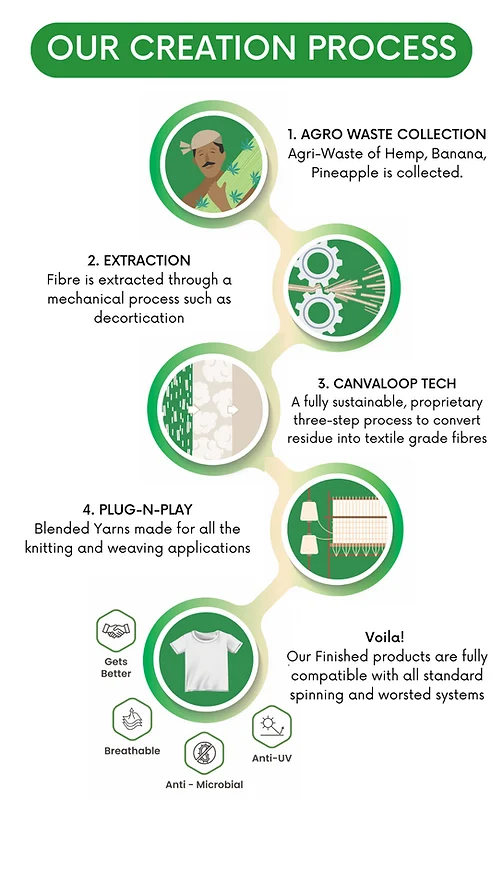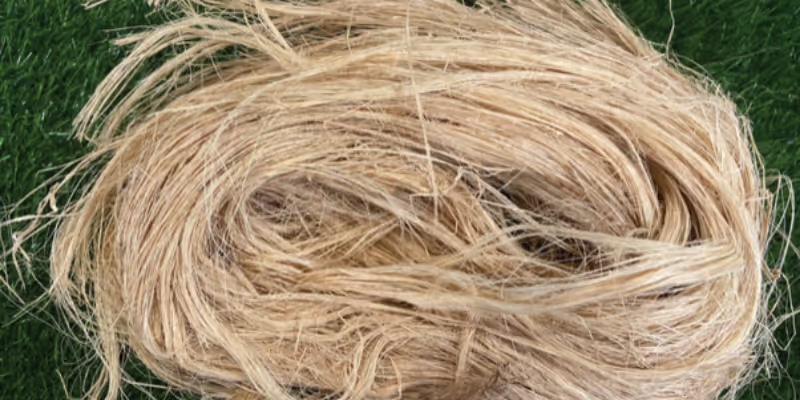Table of Contents
Are you the next big polluter on Mother Earth? You will be surprised by the answer. No, it is not agro waste or food but the textile industry. Fashion buyers make up 10% of global carbon emissions, drying up water resources. And 85% of all textiles go to waste each year because of changes in fashion trends.
While consumer trends have grown by 60% in the last decade, the longevity of keeping wardrobes has significantly decreased. The fashion industry will use 25% of the world’s carbon budget by 2050. Textile wastage will also increase by 30% in the coming years. But you know what is way worse? The materials are made of plastic-based or synthetic fibers such as polyester, nylon, acrylic, and elastane.
They are sold in the name of polycotton on various consumer brand websites, which is equally harmful as it deceives the consumers in the cotton name. The fibers are non-biodegradable, emit nitrous oxides, contribute to greenhouse gases, and are energy-intensive during dyeing, requiring high temperatures.
Admit it or not, the textile industry will be a 52 billion-dollar problem by 2030, and 24% will happen in the raw material stage. Hence, there is a need for sustainable fiber.
Influence of CanvaLoop: An Indian sustainable fashion company
Cotton has been the preferred fabric throughout the ages, but it has challenges. It requires high water use and soil erosion due to intensive cultivation and pesticide use. However, cellulose alternatives include hemp, nettles, linen, viscose, lyocell, lotus stem, agricultural waste, and pineapple and banana fiber.
Yes, the peels of fiber-rich fruits are creating an alternative fashion industry. Our proprietary technology enables us to process agricultural waste using superior textile fibers. The company is using adequately available materials as its modus operandi and is progressive in the textile industry.
How does it work?
The company is building the back end of the global textile supply chain. The technology uses a closed-loop combination to convert agricultural waste into textile-grade fiber. The process is solvent-free, and heat is produced using bio-waste. However, the good part, and what makes it more sustainable than cotton, is that all water is recycled back into the system.

The fiber is yarned from agro-waste, such as hemp, pineapple, and banana. The groundbreaking proprietary chemo-mechanical process also uses agricultural residues. The zero-liquid discharge facility exemplifies the company’s commitment to Sustainability. The process prevents liquid waste from contaminating natural water bodies, supporting global conservation efforts.
Is CanvaLoop just a sustainable fashion company? We don’t think so
Canvaloop is tackling a major problem: agricultural waste burning. Agricultural waste burning is an inherent problem in India. We are the second largest agro-based economy on Planet Earth, and our harvesting season collides with the Mediterranean winds, creating smog clouds of burnt agricultural residue.
Now, this smokescreen is creating air pollution, climate change, and water pollution. It is only causing major health hazards, such as respiratory problems and health problems. The aftereffects of burning are making Delhi a polluted city.
However, using this agricultural waste as textile fiber, Canvaloop has created an additional income source for farmers while mitigating climate woes. The circular economy technology meets the growing demand for products that upend nature and uplift our farmers. The agro waste is converted into high-quality, spinnable fibers, offering farmers an additional revenue stream while reducing pollution.
The company also employs marginalized communities in villages to assist with field separation processes, thus creating employment opportunities and fostering economic empowerment.

The company is changing the narrative of innovation and responsibility for a greener planet by advocating policy laws that incentivize farmers to supply agricultural residues rather than burn them. The company is also partnering with textile manufacturers to integrate our sustainable fibers into their supply chains, thereby creating an ecosystem that drives towards environmental stewardship and a greener future.
The company upholds the strictest safety and environmental standards, utilizing only non-hazardous chemicals and solvents in compliance with the Global Organic Textile Standard (GOTS) and OEKO-TEX certifications.
Hence, the company uses biofuel to significantly reduce its carbon footprint. This diminishes reliance on fossil fuels but aligns with international sustainable goals.
But how can consumers change their age-old habit towards fast fashion?
The company has the most robust initiative, but age-old habits towards hoarding mentality die hard. Hence, consumers need to see the actual value of slow fashion. They need to be aware that the fabric quality they wear matters more than just following trends. Consumers should prioritize durability and craftsmanship.
However, storytelling is needed to make them more aware.
- We must discuss the sustainability journey and ethical practices to create a compelling narrative that resonates with conscious consumers.
- We emphasize slow fashion products’ superior quality, craftsmanship, and longevity.
- It is creating exclusivity by offering limited-edition collections that encourage immediate purchase.
- It is offering customizable products that provide a unique and personalized experience.
- Partnerships with like-minded fashion influencers and sustainable brands also go a long way.
The Road Ahead for Canvaloop
Theia Ventures has invested $200K in Canvaloop with Social Alpha (an initiative of Tata Trusts) in the pre-seed round. Their reasons for betting on the circular economy initiative are the following two.
First and foremost, there are strong linkages to the apparel and garment industry from the founder’s family background in the dying industry. Also, their strategic manufacturing location is in Surat, Gujarat, which is the hub of textile engineering. The custom-built machinery within mechanical tanks converts agricultural waste to textile-grade fibers and a patented enzyme-based softener developed with Canvaloop’s in-house biochemical compound mix.
However, the second reason for investing is the extensive supply network of agriculturally responsible products, as the company has identified farmer clusters and the availability of the fibers.
Will Sustainability help Canvaloop make it work?
In a consumer survey in 5 countries, 75% of respondents recently rated Sustainability as very or somewhat important in their purchasing decisions. The research also indicated that 38% of consumers, particularly GenX and millennials, actively switched from their preferred brand to another because it credibly stands for positive environmental and social practices.

Global brands like Gap, H&M, and Zara are urging the reduction of carbon emissions by half by 2025. They made written pledges in their annual reports to substitute cotton and polyester fabrics with hemp and other cellulose-based fibers.
These brands can access younger clientele demanding more sustainable and environmentally responsible products. Hence, with the growing popularity of using cellulose-based fibers, Canvaloop can also gain a strong market foothold in the Indian fashion map.







